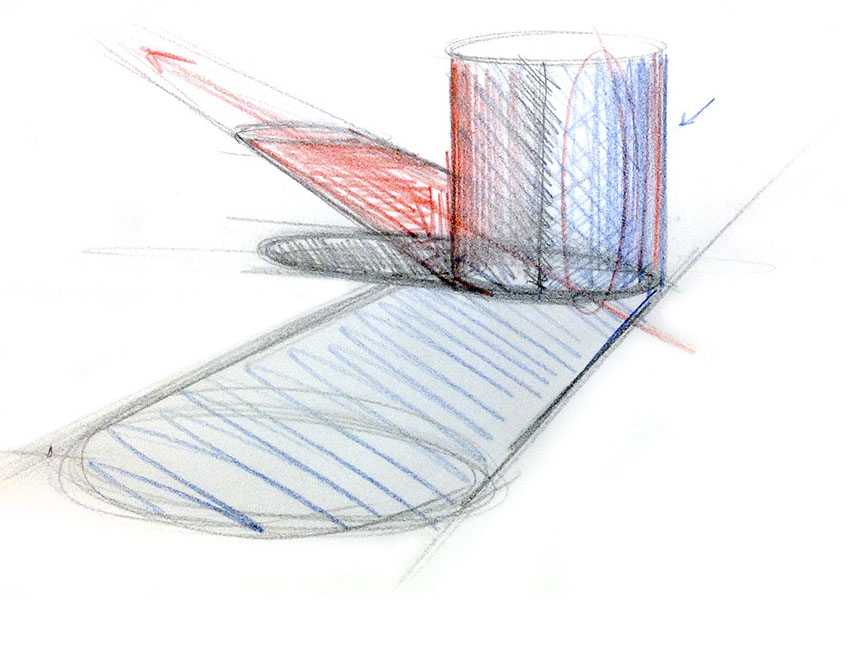
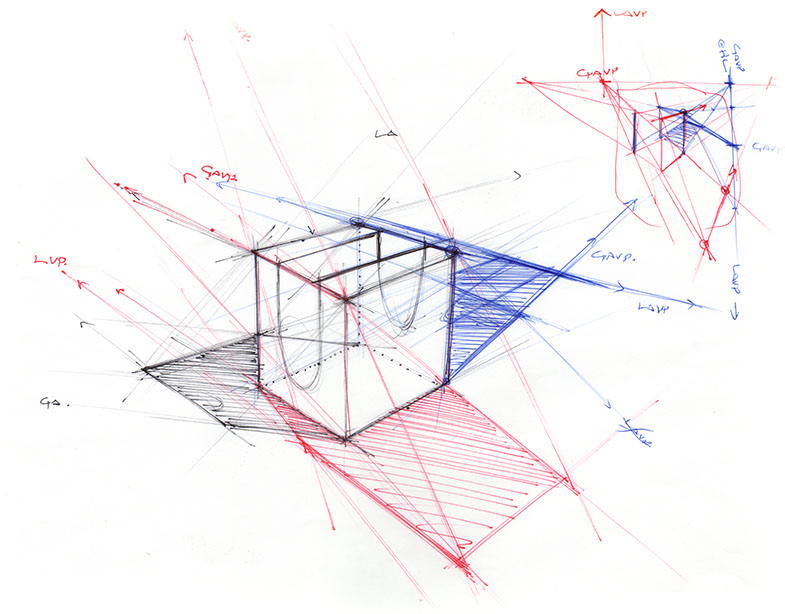
SHADOW CASTING
PARALLEL SHADOW
NEGATIVE LIGHT SHADOW
POSITIVE LIGHT SHADOW
POSITIVE LIGHT SHADOW
PARALLEL SHADOW
NEGATIVE LIGHT SHADOW
There are four types of shadow casting we observe.
Parallel Light. Most common and simplest to understand and use. Shadows simply cast off to the left or right of the object. Difficulty Level 1
Positive Light. Great for High Drama. Shadows which come toward
us, caused by the light source being in front of the object.
Shadow gets larger as it gets closer to us. Difficulty Level 2.
Negative Light. Adds interest without blocking the form or losing
the highlight. Shadows which move away from the object
due to the light source being behind the viewer and/or
object. Difficulty Level 2
Point Light. Most complex. Where we have a single nearby light source, such as a desk lamp or room light, the shadows will radiate away from this light source. Most room situations have a multitude of point lights, including bounced or reflected
light sources. Difficulty Level 3
TUTORIALS & HOW-TO GUIDES
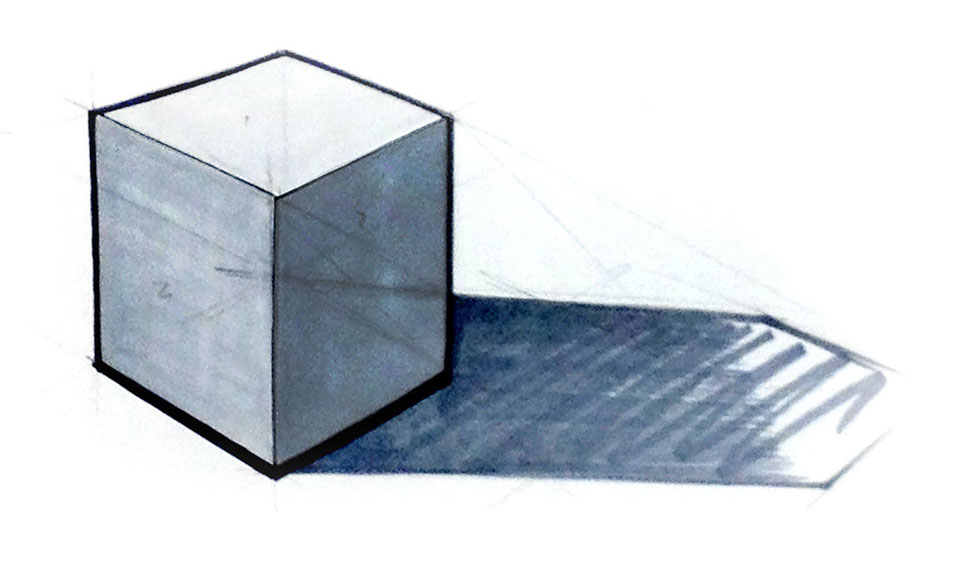
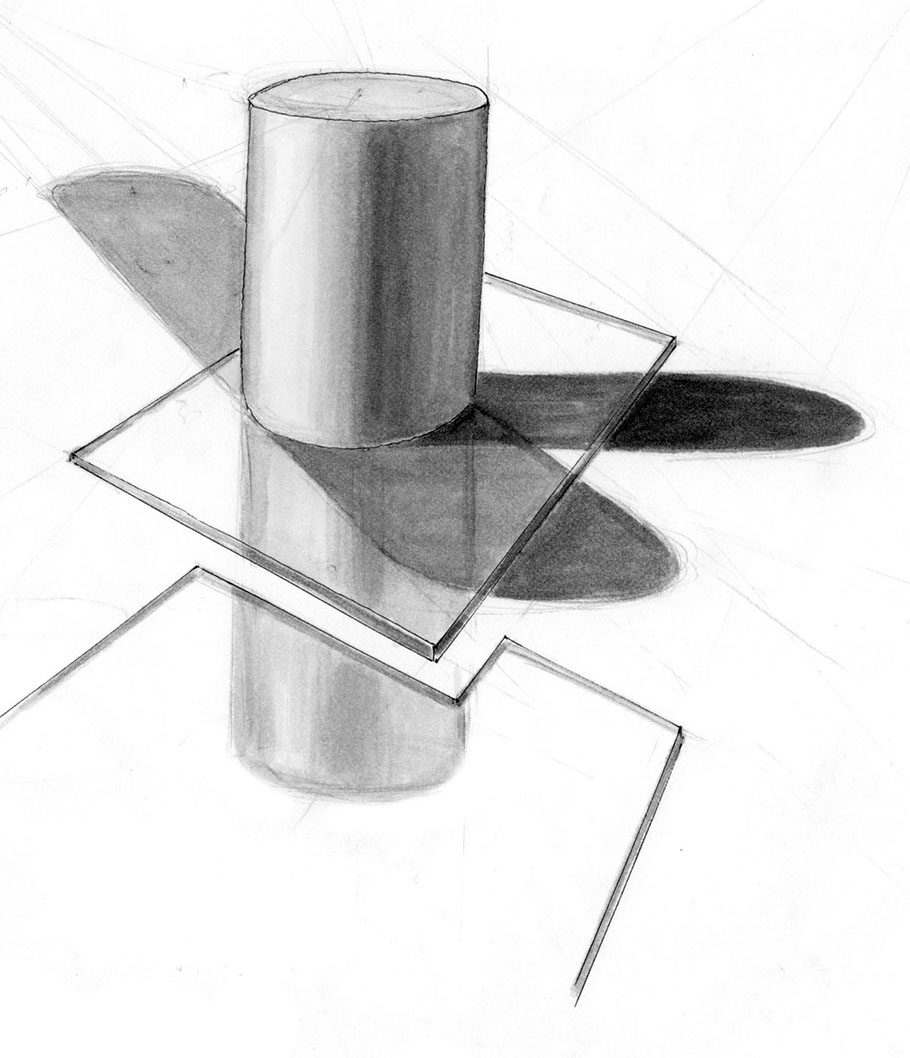
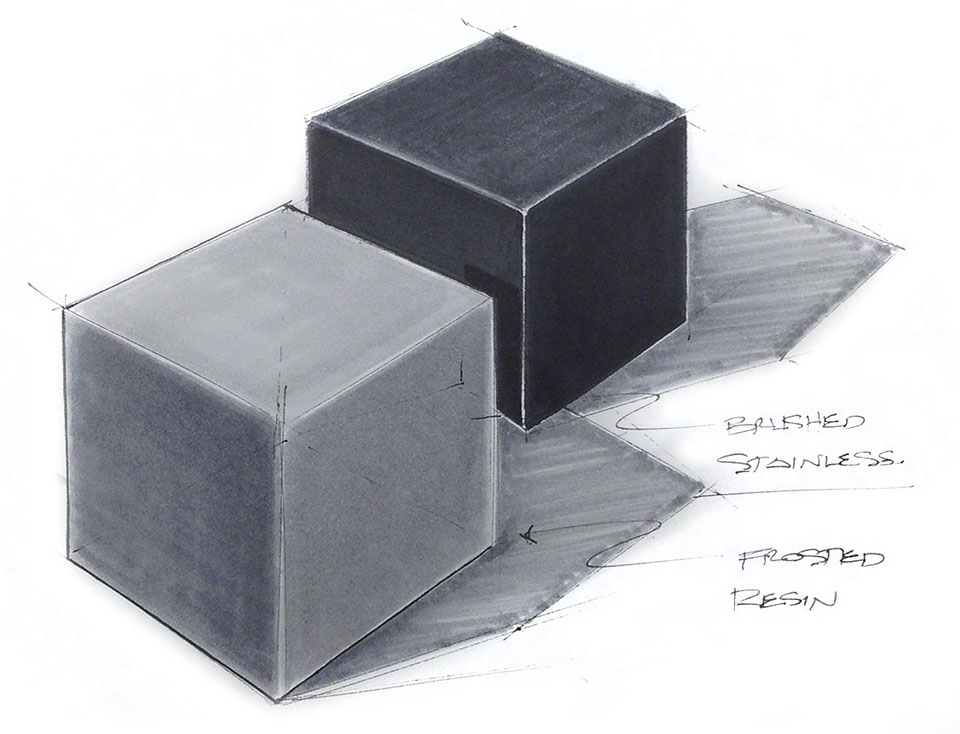
1. PARALLEL SHADOWS
The simplest type of shadow casting is known as Parallel. In this scenario,
the light comes from one side and we simply use "parallel" Ground Angle
(GA) lines and parallel Light Angle (LA) lines in the construction.
In this scenario, though the shadows are moving away from the forms, parallel construction was used, not Negative Light.
NEGATIVE LIGHT SHADOW
PARALLEL SHADOW
POSITIVE LIGHT SHADOW
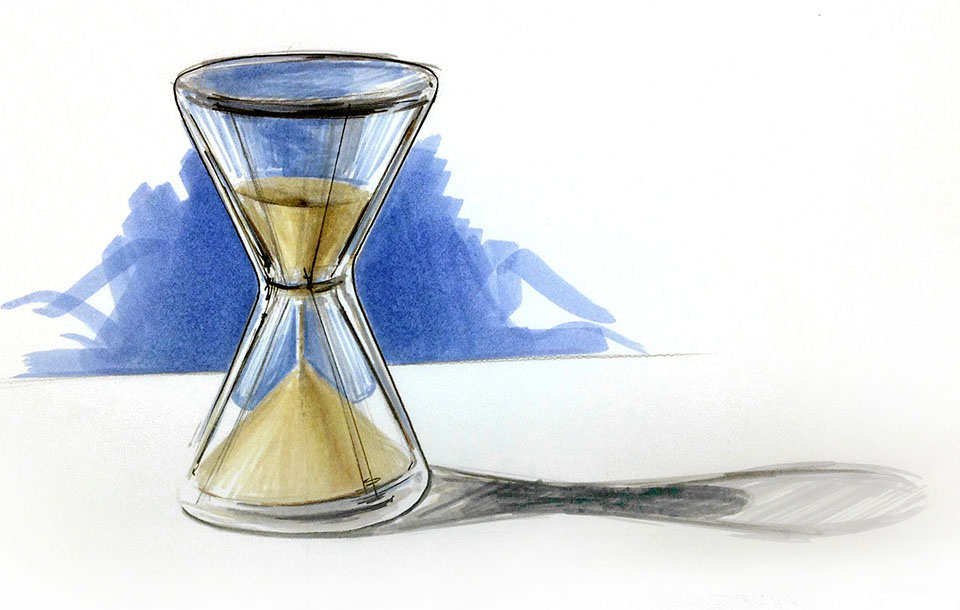
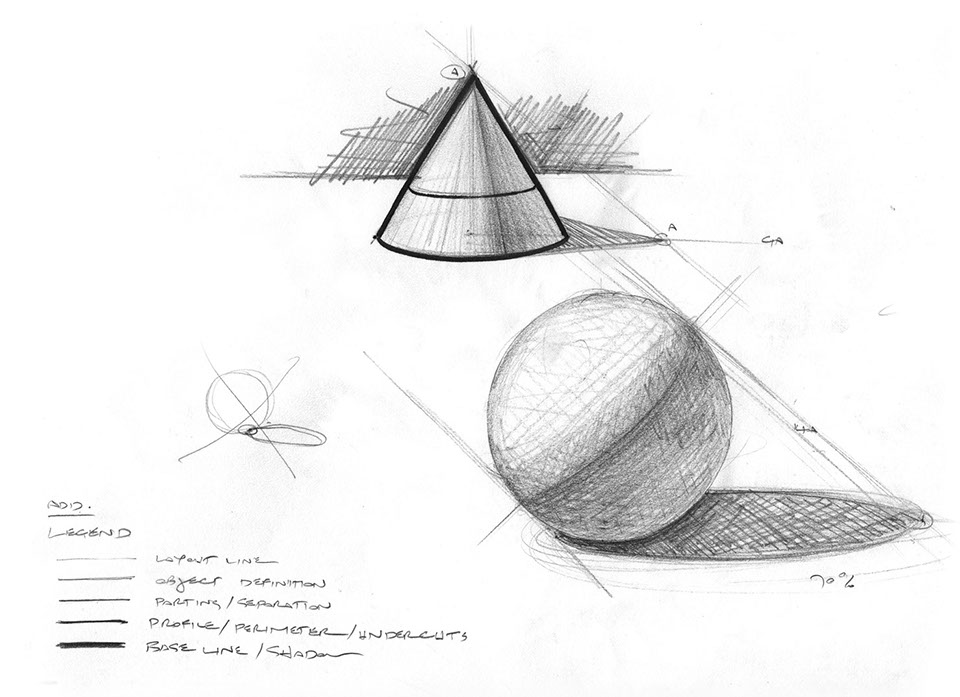
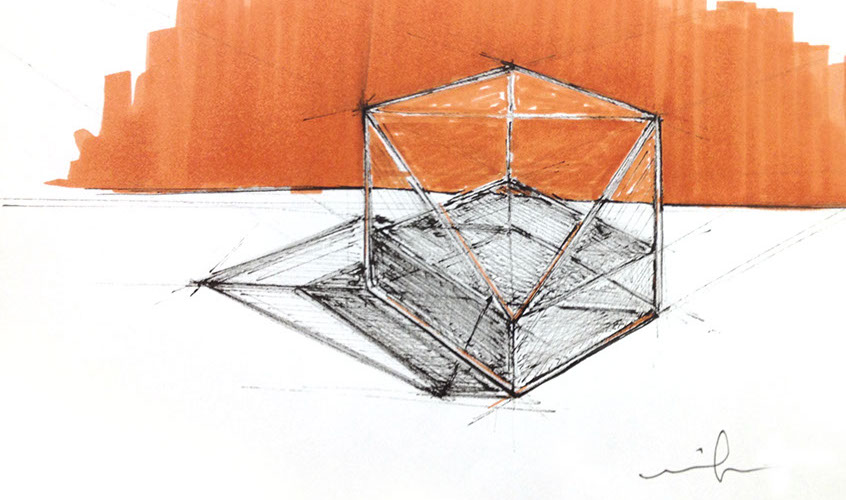
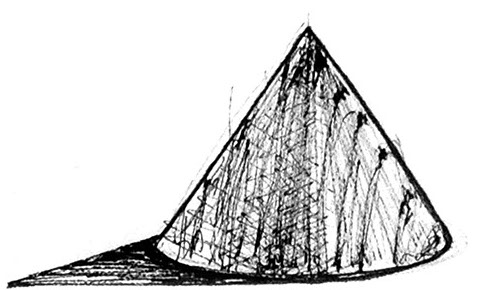
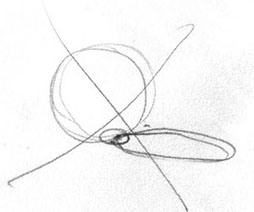
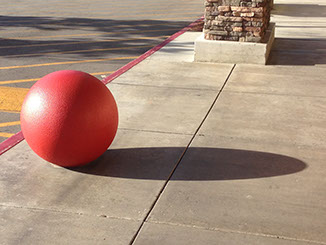
COMMON ERROR ALERT!
Make sure your shadow ellipse wraps around the form, not just
a loop off a tangent of the circle
of the sphere.
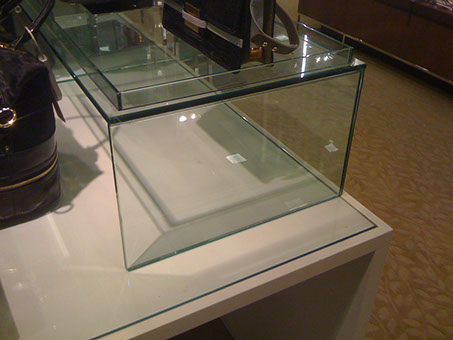
Photo of a parallel light shadow. Notice the long shadow and a more vertical core shade, strong high light glare from the sun intensity, and the bounced light on the back side.
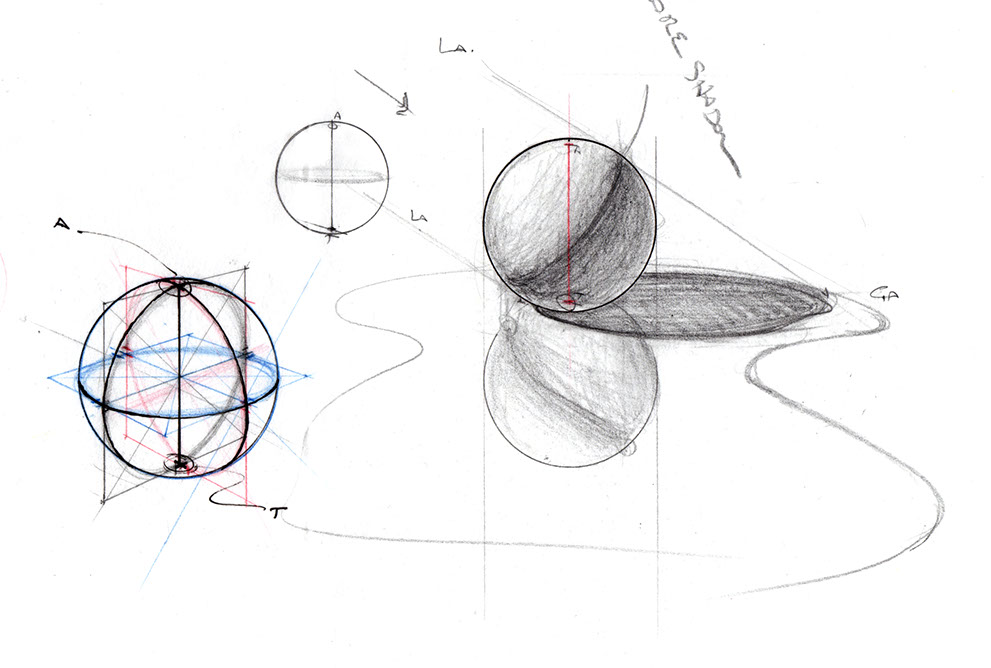
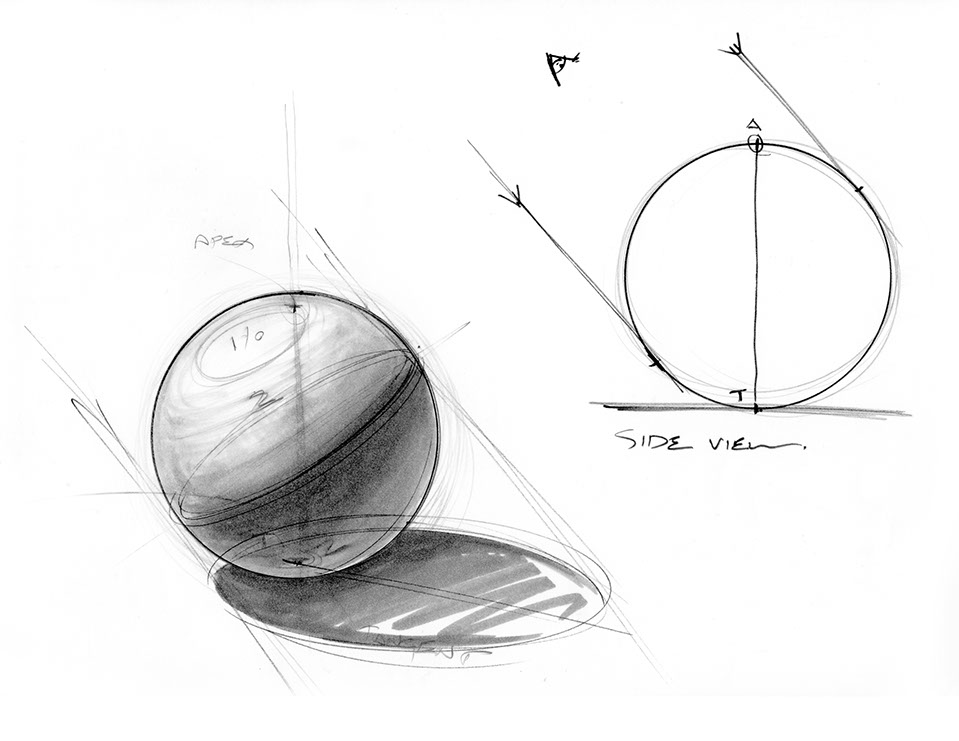
Light Angle (LA)
LA
LA
LA
Ground Angle (GA)
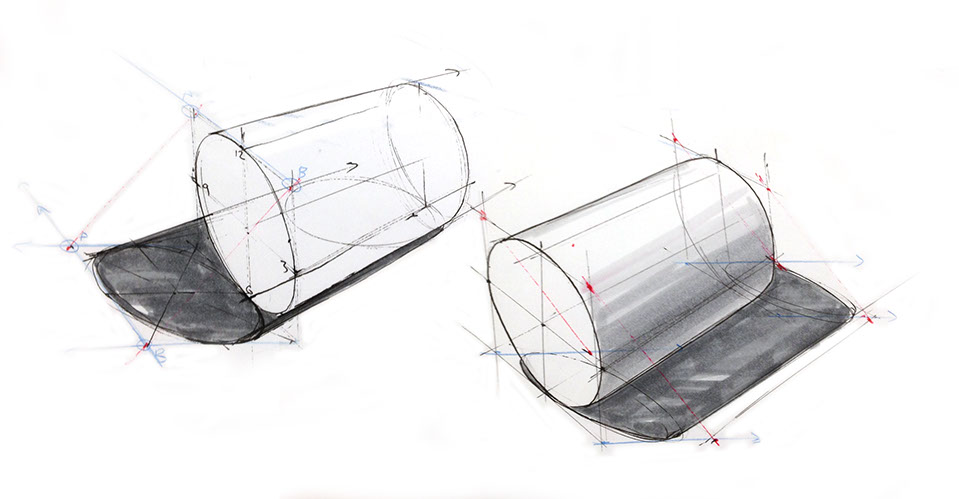
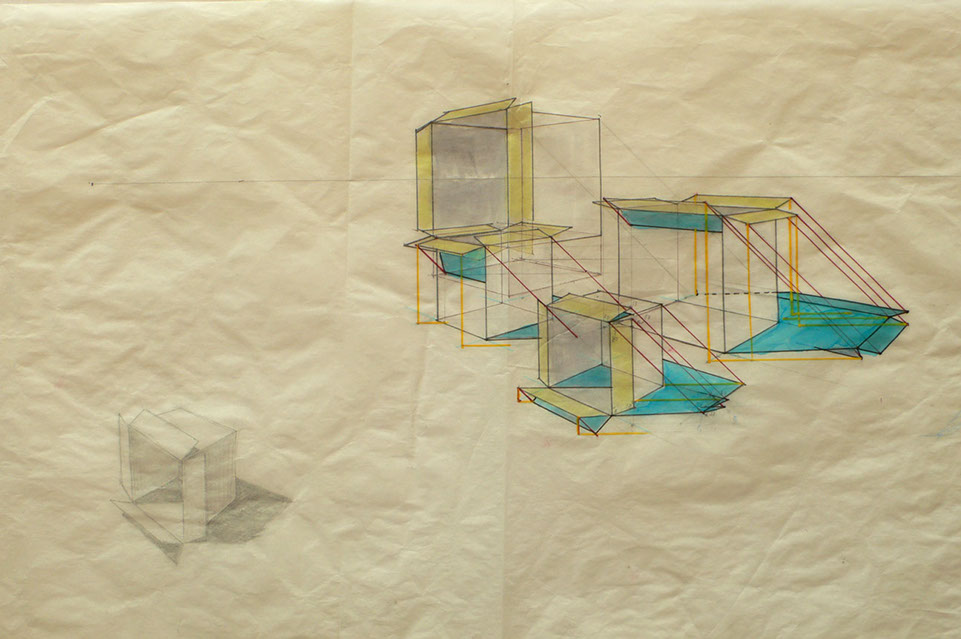
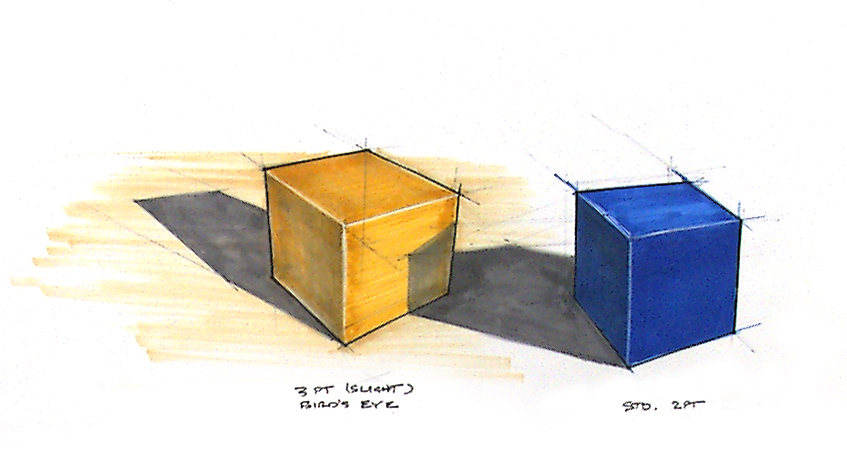
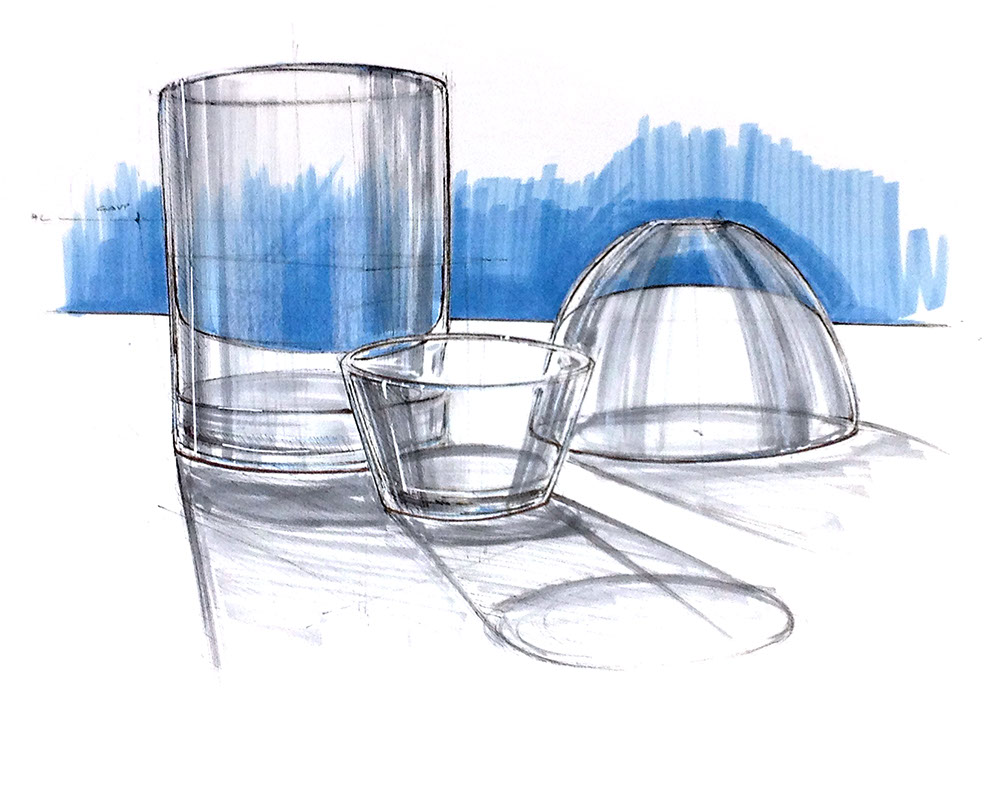
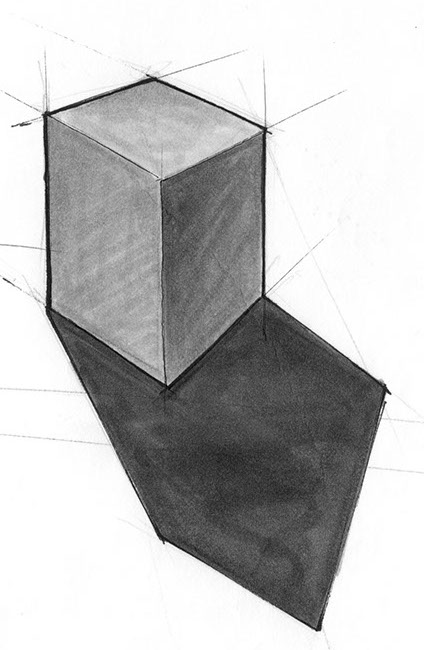
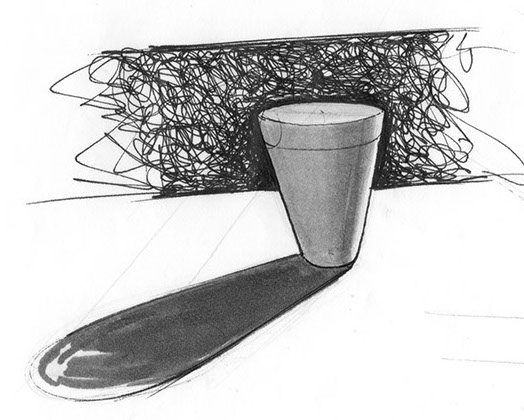
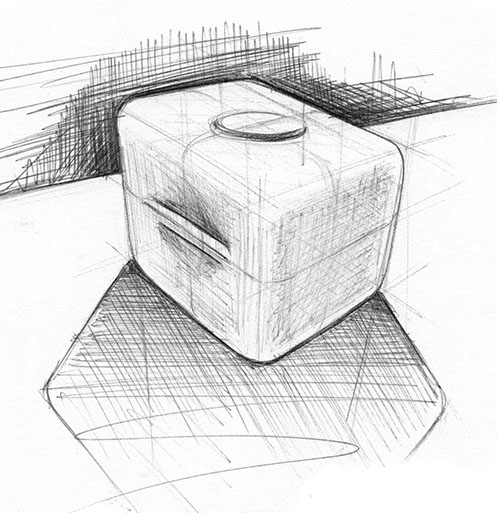
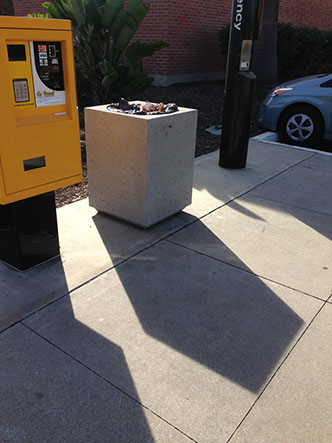
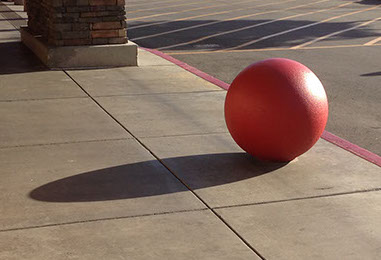
2. POSITIVE LIGHT SHADOWS
Light source is coming from in front of us, casting shadows towards us as in this photo.
3. NEGATIVE LIGHT SHADOWS
Polished Floors, Polished Counter Tops, or simply polished top horizontal planes on common products like a toaster, desk, or coffee table.
Notice the very high core shade in this positive light shadow cast scenario.
4. POINT LIGHT SHADOWS
In rooms, each lamp and light source will cast their own shadows, radiating outward away from the light source.
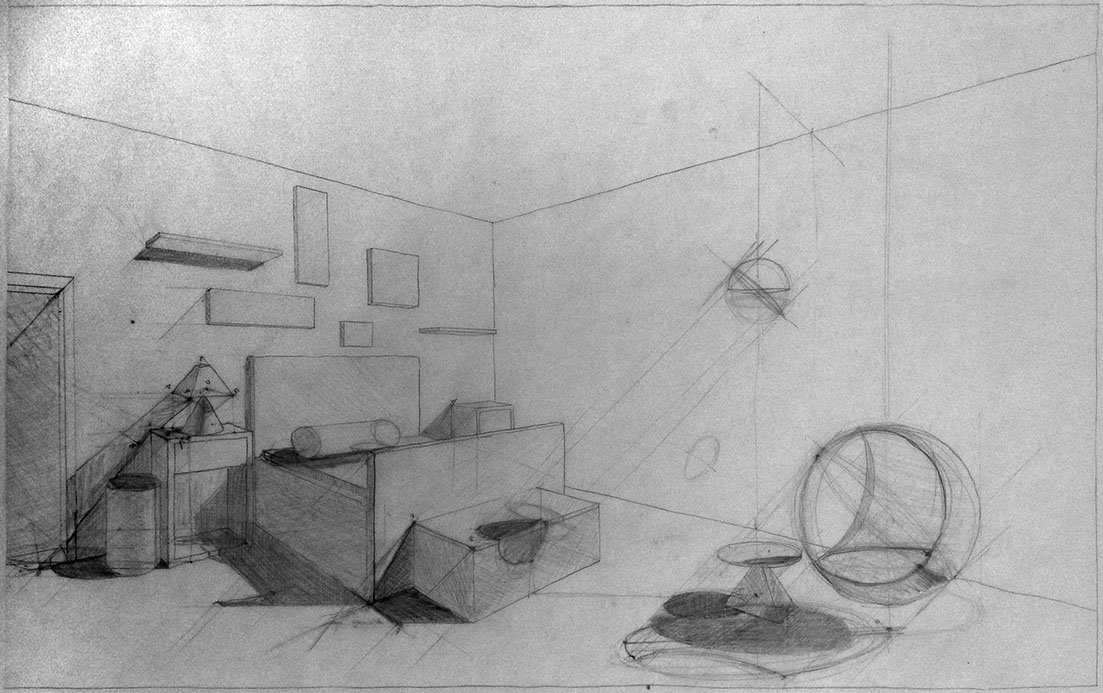
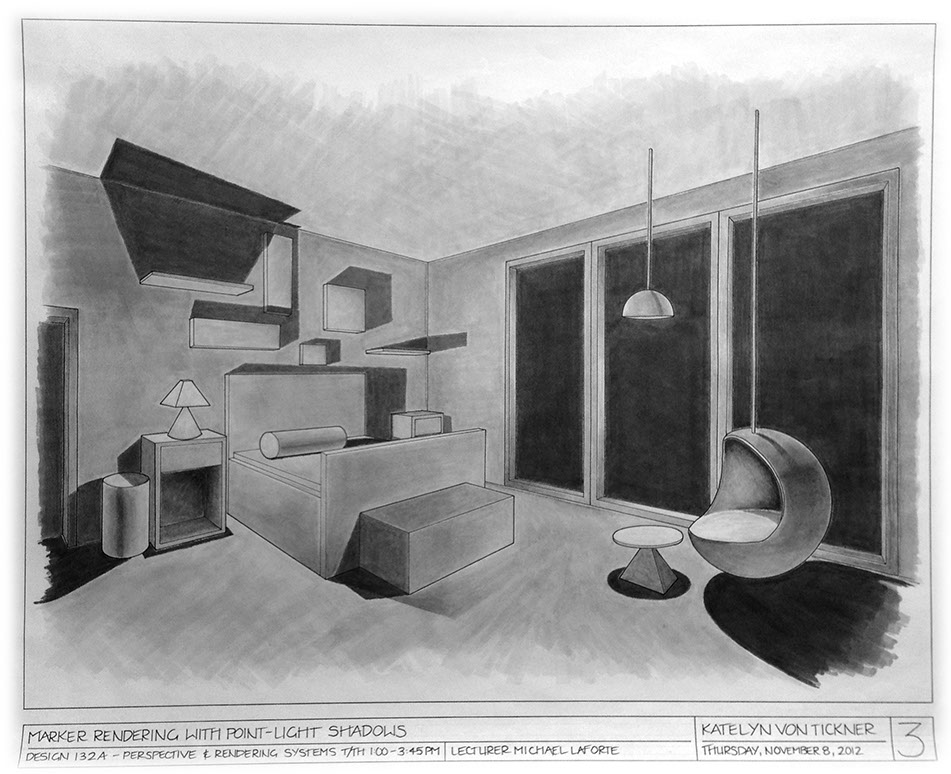
SPECIAL SITUATIONS, FLOATING OBJECTS
Notice in the scene above, the "floating" chair. While we know objects don't magically float, there are many scenarios where the support may be extremely thin, the object may be hanging or suspended, or as in aircraft we may want to show a relationship to the ground plane. Knowing this analysis is very helpful.
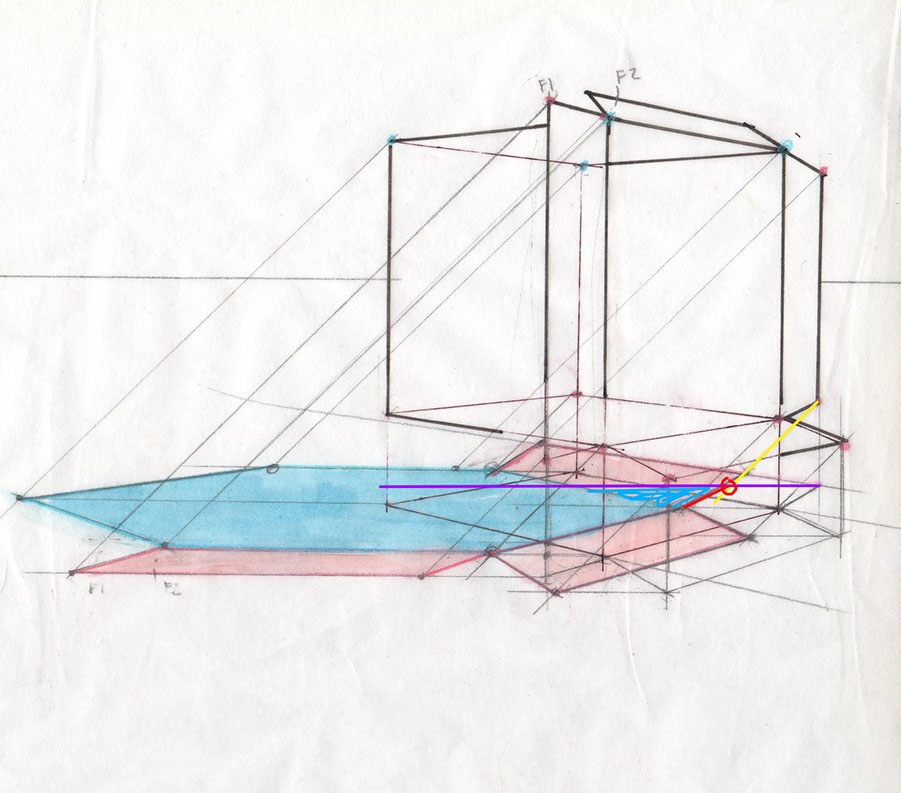
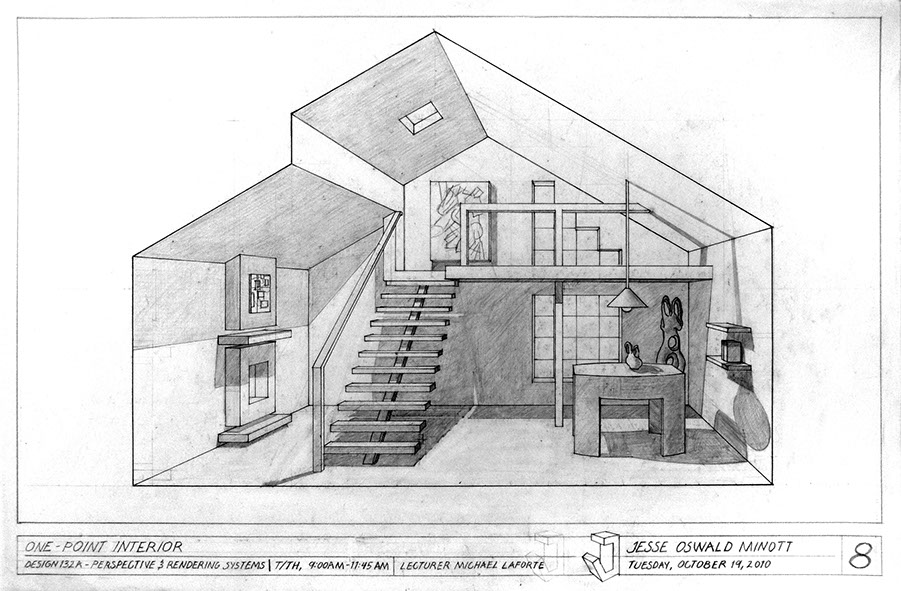
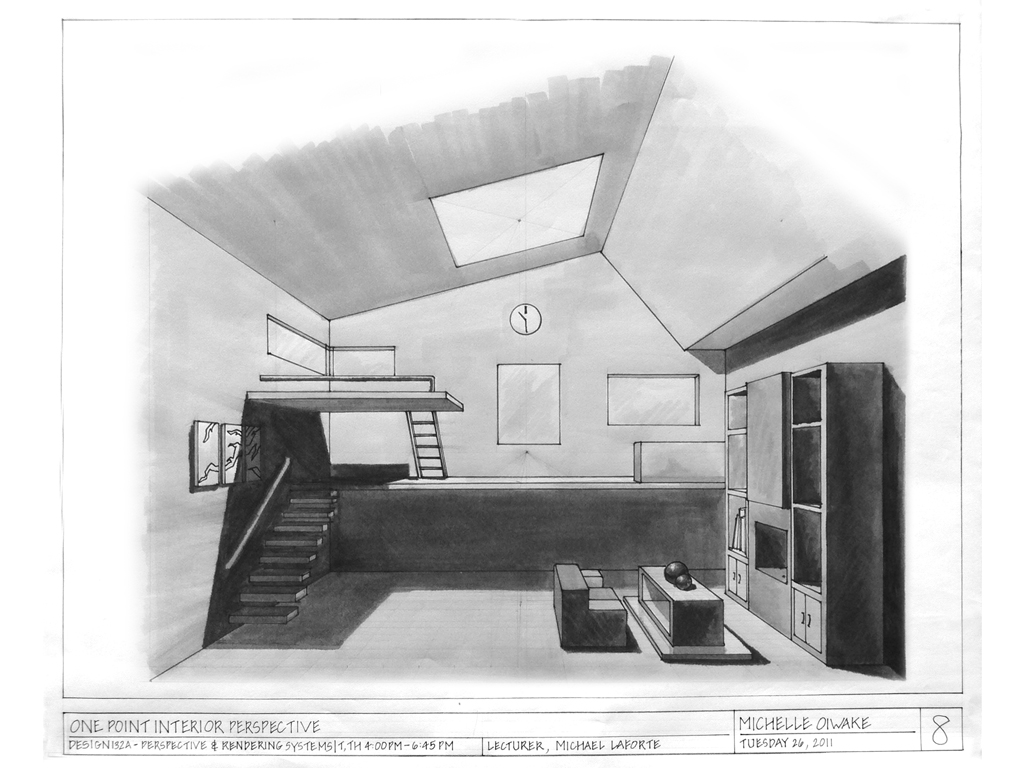
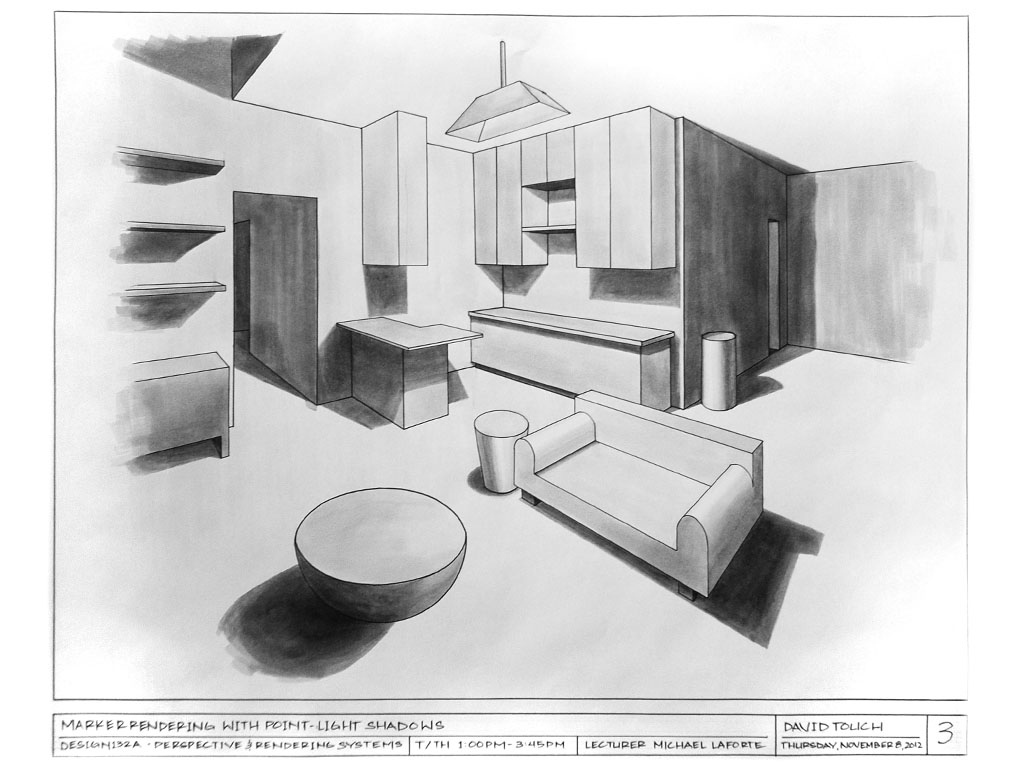
SHADOWS MEETING WALLS
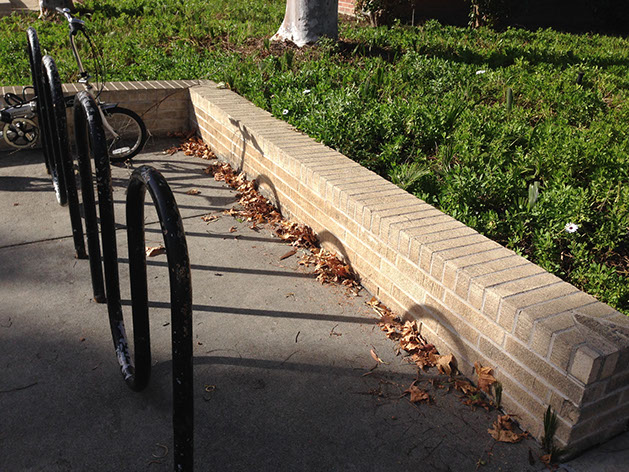

* Estimate only. See instructor and calendar for specific due dates. Summer Session schedule is more compressed with one week equal to approximately two and half semester weeks.
CSULB | COTA | DEPARTMENT OF DESIGN | BIO

Questions, feedback, suggestions?
Email me with your recommendations.
©2020 Michael LaForte / Studio LaForte, All Rights Reserved. This site and all work shown here is purely for educational purposes only. Where ever possible student work has been used or original works by Michael LaForte.
Works by professionals found online or in publication are used as instructional aids in student understanding and growth and is credited everywhere possible.